Last year, the Pixel Watch was a great first effort from Google that ticked almost all the boxes with the well-known exception of battery life. This year, Google has made some pretty bold claims of having addressed that with a full 24 hours of battery life “out of the box” with the always on display on by default.
As covered in the launch details and first-week thoughts, there’s plenty to like about the Pixel Watch 2, in fact it’s a lot of tweaks that are all going in the right direction and give a better user experience; but also a couple of areas that haven’t quite hit the mark.
Design and Hardware: It’s easy to mistake it for the first-generation device
If you’ve seen the first generation, and now this one, you’ve got to look pretty closely to pick the visual differences. I’ll hasten to add, that this is a good thing in my eyes because the Pixel Watch is a good-looking device; in fact, last year I said:
It’s a really nice looking watch, I’d argue one of the slickest looking watches around at the moment. Sleek enough to fit in a professional setting but also not look out of place in a casual or fitness environment.
And if you’re looking to adapt the watch from one environment to another, the bands from the first generation are interchangeable with this one. The mechanism is pretty tight, to a point where — the first time at least — you’re probably going to feel like you’re breaking the thing!
The screen is noticeably better as are several of the internal specs that we’ve outlined in the release. Now I’ve spent more time with it, while you can find the difference in weight, you can’t feel it with the changeover of material from stainless steel to aluminium. I’m not a runner, but I’m assured that on long runs, there’s a potential win to the lighter chassis.
You probably won’t notice the screen upgrade, until you’re outside in bright light. Then it’s really clear that the Pixel Watch 2 is a noticeably brighter screen; making it really easy to read even in bright sunlight.
Among these little tweaks of hardware, one thing I have noticed is that the haptic motor is stronger. Not wildly so, but it’s significantly stronger than the first generation, which is welcome, as there were times I missed notifications because I was moving around when they went off.
After the experience I’ve had for the past 12 months with the first generation, I haven’t been anywhere near as worried about the Pixel Watch 2 getting knocked around. The first generation handled like well, so I have no reason to be concerned that the newer device would be any different.
The battery is better, but not brilliant
During the briefing, Google put out the claim that out of the box, with the always on display turned on you will get a full 24 hours of battery life. Several weeks in, I can confirm that this is, in fact, accurate provided that you:
- Aren’t doing a big workout, particularly an outdoor workout using GPS
- Don’t get a constant stream of notifications to your watch, so be selective with the apps you allow notifications to trigger
- Aren’t pairing headphones to the watch to stream music
- Don’t routinely take calls on your watch, this used a surprisingly high amount of battery
In my testing, I’ve had as much as 31 hours of battery life and as little as 17 hours depending on what I was doing. Of course, the 17 hours was early in testing when data sync was occurring and I had a lot of screen on time while I was setting up (and playing with) the device. The 31 hours included some flight mode time while I travelled interstate, but I wouldn’t do an overnighter without the charger.
Unless of course, you’re happy to turn off the always-on display. I noted a near 48-hour battery life when I did this a couple of times and, that is a really good result for regular travellers not to need to take a charger if you’re just going overnight.
Quickly to reiterate my point from the early impressions post: The lack of compatibility from the previous generation charge to the Pixel Watch 2 is pretty annoying if you’re getting a generational upgrade and investing in an extra charger. But with the extra battery life, it’s far more manageable than the first generations.
I understand why the charger changed, with the extra speed of charging; but it’s a frustration nonetheless.
Software and Interface: Responsive to users and their needs
I feel like it’s important to note that there weren’t any huge issues with WearOS on the original Pixel Watch. That being said, WearOS 4 is pretty solid now, with lots of great features and on the hardware provided, it performs really well and feels more mature.
With the updates to some of the Google apps, I’ve found myself reaching for my phone (The Pixel 8 Pro review is coming soon…) less than normal. This navigation through the interface has been aided by the improved accuracy and smooth scrolling of the crown and the general performance of the device, making it very responsive to input.
There are some improvements here too, with the watch — this is a software feature, not specific to the Pixel Watch 2 — now being capable of changing between mobile devices without the need to reset it.
Changing from the first generation to the Pixel Watch 2 was a comfortable and very familiar move, and I’ve noticed that everything is just that little bit better: Interface, features, sensors and performance. Which, understandably — given there are non-Pixel Fitbit devices on the market — leads me to the point that to use the fitness features, you’ll still need two apps: The Pixel Watch app and the Fitbit app.
Fitbit and Health
If you’re buying a Pixel Watch then you’re likely either heavily invested in the Google ecosystem, looking at the fitness tracking features or both. With the additional sensors and capabilities in the Pixel Watch 2, you’ll get a lot more from your investment than initially may meet the eye.
An interesting new feature — that you need to manually enable in the Fitbit interface — is the stress warnings. This tracks your heart rate, breathing and microscopic sweat on your wrist (using the new cEDA sensor) to gather signs that your body is undergoing stress. This will trigger a pop-up on the device to ask you to log your moods, as it won’t always be stress that is causing the response.
At the core of what you’re getting, you’ll see general health tracking: Steps, your activities summary and sleep tracking. Included is a 6 month trial of the Fitbit premium offering (you can cancel 24 hours later to avoid getting caught later) which finally puts the purchase of Fitbit years ago to really good use.
The background tracking just happens and I’ve found that the automatic start on activities is much better this time around than last year’s device. More so, with outdoor activities and as a point of note, this will heavily dip into your battery by using the GPS and active HR monitoring, which is said to be up to 40% more accurate with the generational improvements.
During your workout, the new interface is easier to read too, with a vertical scale on the left showing your heart rate and colour coding as to where you are in your heart rate zones. For someone like myself who wears glasses during the day, this is pretty useful because I don’t usually wear them during workouts which makes it pretty hard to read the real-time data on my wrist. So being unable to breathe and seeing the HR at the top of the scale, bright red is a pretty obvious indicator that I’m working hard enough!
Other features
There’s a few other features worth taking a look at on the Pixel Watch 2 that make it a great investment. They were very much featured during the Google Keynote and in the documentation on the device; namely safety features.
Fall detection is a feature that has carried over from the first gen Pixel Watch, but there’s new options that have also been introduced. The safety check is a great feature, allowing you to set a timer; at the conclusion of which, if you don’t “check in” your watch will automatically share your location with chosen contacts. You’ll get a silent notification on your writs in the last minute, allowing you to check in or outright turn off the feature.
Something I quite like — providing you’re connected to your phone, or have an eSIM on the device — is the quick trigger for a call to emergency services or a chosen contact. It’s a simple case of quickly pressing the crown 5 or more times to trigger an SOS call. In the unlikely event you manage to trigger this accidentally, you know you’ve done it and have about 5 seconds to cancel the call before it dials out; so there’s something of a failsafe there.
So, should you buy one?
It’s not perfect, but “perfect” is very subjective based on user needs and, if the battery consistently lasted 4, preferably 72 hours it would be very difficult to fault the Pixel Watch 2. Being in the habit, I still find myself giving it a quick top up at bed time and putting it on for a decent charge while I get ready for work in the morning and haven’t run into any major battery troubles yet.
Compared to the Pixel Watch (first generation) it’s got some new features, some polished features and a significant step up in user experience. The crown and interface are smoother, even having the capability to sync modes across your watch and phone mean I’m not getting notifications disturb me overnight as I have an automatic DND from 11pm – 6am on my phone.
I still think there’s space for a larger model for users who want a little bit “more” from their screen, but the form factor as it stands will hit the mark for a majority of users regardless of gender. With the refinement and advancement of the Pixel Watch 2; in this size of device I believe this is one of, if not the best WearOS device right now. If you’re after a stronger fitness focus, you can move to Garmin, or if you want a bigger screen; Samsung is the go-to!
The pricing is at a level — Starting at $549.00 for Bluetooth/Wi-Fi option and $649.00 for the LTE version — the where I’d question the need to upgrade if you’re on the first gen, but definitely recommend it if you’re buying your first Pixel Watch because it’s got a lot of features, convenience and health benefits to offer.
Disclosure Statement
Google has not requested the return of the item following review.

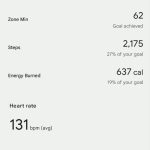
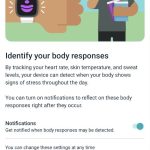

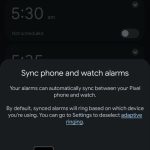

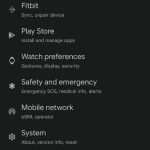
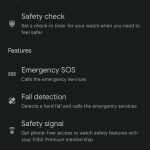



Lots of people got free LTE ones with Telstra/Optus and you can get them quite cheaply. Same goes for those who jumped on HN/Optus P8P 128/256 deal.
I’m enjoying my PW2 (still waiting on Bay to arrive…) and was told the gold/hazel was a bit feminine, but that’s fine by me. Now I need to buy a second PW2 charger for my other desk location… there goes $50. Thankfully I can still use my old bands.